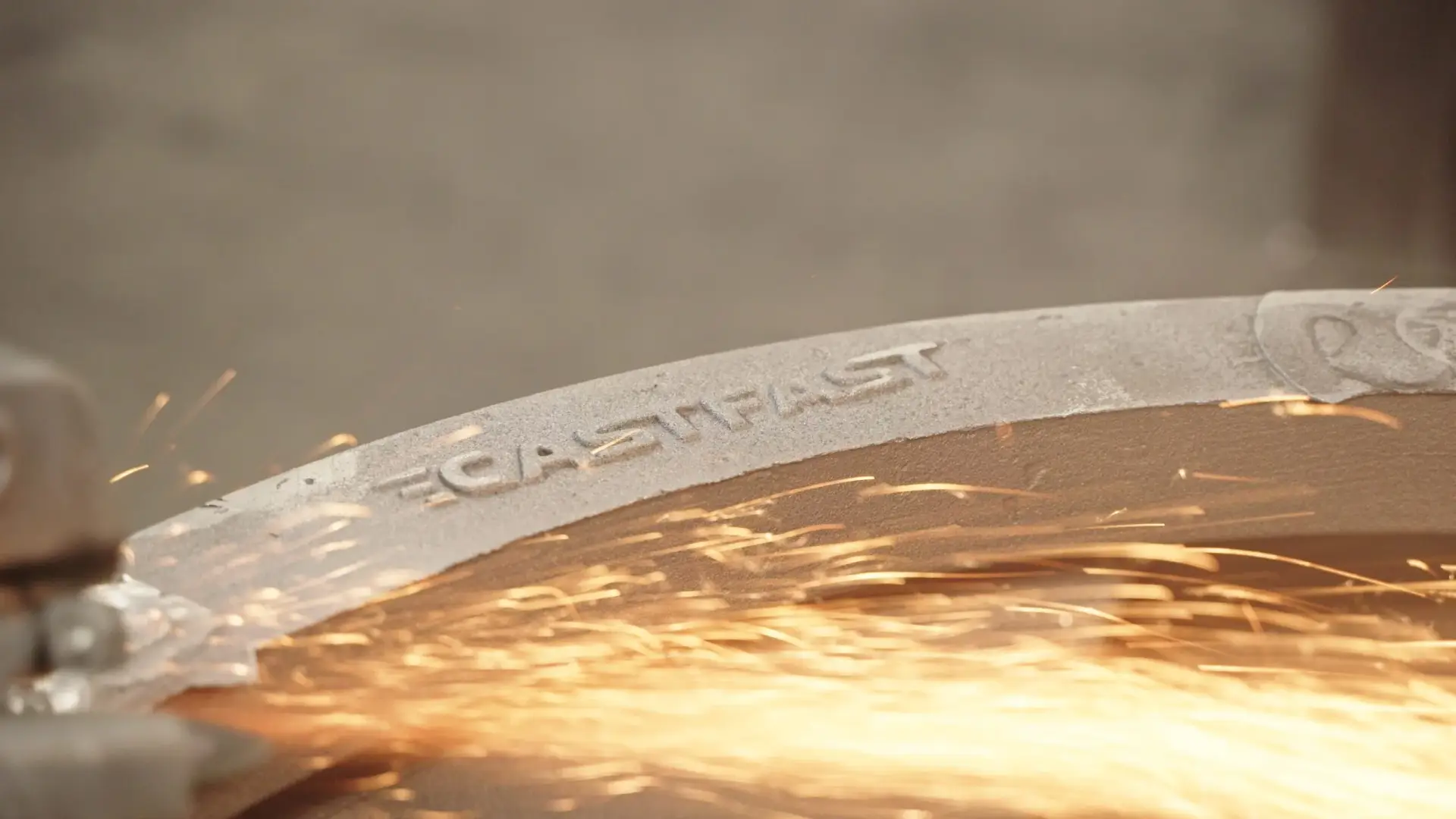
Designers who order 3D sand castings for the first time often ask about the available and usable materials. The short answer: everything that is possible with conventional sand casting can also be used with 3D sand printing: from aluminum to iron to steel.
The more nuanced answer: apart from the desired properties of the subsequent cast part, the component geometry plays an important role in the precise choice of material in order to ensure clean filling of the mold and a good solidification process. As 3D sand printing opens up new possibilities for the geometry of cast parts in particular, there are also implications for material selection. We will first briefly cover these for iron casting. We will deal with aluminum and steel elsewhere.
Within the cast iron category alone, there is of course a whole host of materials that can be further refined and adjusted. At CASTFAST, we currently offer the material groups GJL (cast iron with lamellar graphite) and GJS (cast iron with spheroidal graphite) as standard.
GJL is the classic “gray cast iron” material. It is ideal for parts where machinability is more important than extreme strength. GJS on the other hand, nodular cast iron, is the all-rounder – stronger and tougher, a good choice for more demanding applications. It can often replace steel, which makes a huge difference in casting. Casting iron is easier than casting steel. The carbon in the molten metal “grows”, i.e. increases in volume, as it solidifies, creating pressure and making the structure denser. This does not happen with steel. The result is shrinkage during casting, which has to be laboriously controlled.
An important point is the specific compressive and tensile strength of cast iron. GJL materials have excellent compressive strength, making them ideal for applications where high load-bearing capacity under pressure is required. GJS materials, on the other hand, are characterized by their superior tensile strength, which makes them indispensable for applications where the material must withstand tensile forces.
These differences in strength properties enable us to offer the right solution for almost any requirement. For example, a GJL may only have a tensile strength of 200 MPa, but a compressive strength of up to 800 MPa. This can be exploited in the design! In addition, GJL is characterized by very good thermal conductivity and a high damping capacity. The vibration-damping properties in particular make GJL a popular material for machine components.
Due to the precision of the process and the freedom of design, molds created in the 3D sand printer make more complex, thinner-walled, more delicate castings possible. When this is taken to the extreme, it has important implications for material selection.
In principle, GJL materials flow better. They are more “fluid” at the micro level. GJL can therefore also fill complex shapes with very thin walls well. The problem is that a thin wall means rapid cooling, which can quickly make a GJL material very brittle. GJS materials also have this brittleness problem. But they are inherently tougher. In terms of their structural properties, they react more tolerantly to rapid cooling, but are also tougher in the liquid state and do not flow as well.
In practice, we therefore always weigh up the options individually to find the right material. As a designer, however, you should start with the desired component properties. We take care of the technical casting considerations in borderline cases. So far, we have always found a solution!
Interested in trying it out? Click here to go to our calculator. You can find out more about the materials in detail in the table below. Still have questions? We are gladly.
Areas of application
Components subject to light (tensile) loads such as small housings, machine beds for light machines, covers, frames for electrical machines.
Properties
Good machinability, low strength.
Areas of application
Medium-heavy (tensile) loaded parts such as larger machine beds, housings for larger gearboxes, motor housings, pump bodies, valve bodies, base plates.
Properties
Better strength than GJL 200, good machinability.
Areas of application
Highly stressed machine parts that require greater strength, such as large gearbox housings, press frames, heavy machine beds, large pump bodies.
Properties
Higher strength than GJL 250, still good machinability.
Areas of application
Components in the automotive industry (axle beams, brake drums, steering parts), machine components subject to medium loads.
Properties
Good strength and toughness, better wear resistance than GJL.
Areas of application
Highly stressed automotive components (truck axles, transmission parts), heavy mechanical engineering components, agricultural machinery, construction machinery components.
Properties
Even higher strength than GJS 400, but less tough. So it breaks earlier.
Areas of application
Very highly stressed parts such as heavy vehicle parts, large industrial gearboxes, components for heavy machinery and construction machinery.
Properties
High strength and very good toughness.
Areas of application
Extremely stressed components in demanding applications such as parts for mining machinery, heavy construction machinery components, highly stressed parts in power generation.
Properties
Highest strength, but lowest toughness. The milling cutters literally bite their teeth out on this. Really hard, so little wear.
© 2025 All Rights Reserved.